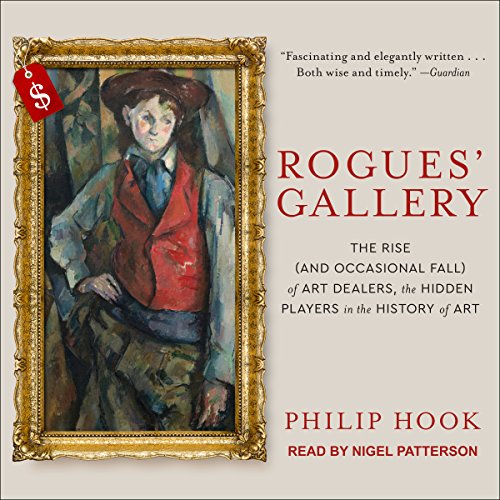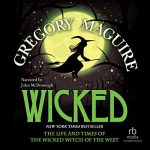Rogues’ Gallery: The Rise (and Occasional Fall) of Art Dealers, the Hidden Players in the History of Art audiobook
Hi, are you looking for Rogues’ Gallery: The Rise (and Occasional Fall) of Art Dealers, the Hidden Players in the History of Art audiobook? If yes, you are in the right place! ✅ scroll down to Audio player section bellow, you will find the audio of this book. Right below are top 5 reviews and comments from audiences for this book. Hope you love it!!!.

Review #1
Rogues’ Gallery: The Rise (and Occasional Fall) of Art Dealers, the Hidden Players in the History of Art audiobook free
It was a new book, as advertised.
The book is for a museum reading group,discussion about the role of art dealers throughout history.
Review #2
Rogues’ Gallery: The Rise (and Occasional Fall) of Art Dealers, the Hidden Players in the History of Art audiobook streamming online
This is all about the art dealers. Don’t look for stuff like forgers or how they evaluate what is art.
Review #3
Audiobook Rogues’ Gallery: The Rise (and Occasional Fall) of Art Dealers, the Hidden Players in the History of Art by Philip Hook
Such an amazing book written by one of the best specialists on the subject. You obviously have to have an interest in art or art history and if you will really enjoy it. I can’t think of any other book or textbook to hold the information and details of dealers and the history of the art market as well as a bit of humor.
Review #4
Audio Rogues’ Gallery: The Rise (and Occasional Fall) of Art Dealers, the Hidden Players in the History of Art narrated by Nigel Patterson
Great book for history of dealing and selling att
Review #5
Free audio Rogues’ Gallery: The Rise (and Occasional Fall) of Art Dealers, the Hidden Players in the History of Art – in the audio player below
This book covers a topic that has always fascinated me. What makes one amalgamation of wood, canvas and oil paint worth hundreds of millions of dollars, and another one worth $15 at a garage sale? True, anyone can see the genius in a Monet, but genius is in this case a human-defined quantity. To put it another way, how did Monets craft become genius, while your brother-in-laws still-life paintings clog up the garage?
Philip Hook has the experience and expertise to tackle this question. He has held senior positions at Sothebys and Christies, and has an appreciation for both the current and historical art market.
=== The Good Stuff ===
* Hook writes well, and avoids the complicated and flowery language that plagues art books. He is able to explain various artistic styles and complicated artist/agent relationships in a way that makes them understandable and interesting.
* The narrative runs over several hundred years, and the author is able to show how art brokers fit in with their own times, and yet how many of their sales tactics and business strategies were timeless. Along the way we meet art merchants of various degrees of morality and trustworthiness.
* Hook is at his best when examining the motivation of the artist and art broker, and how they intersect. For example, it was not uncommon for brokers to contract to buy some percentage of an artists output for a fixed price. While the artist ended up with less money than he might have made on the open market, he was guaranteed a fixed and predictable income stream. Similarly, some well-known artists might owe some of their fame and success to their brokers ability to place their paintings in top-tier collections.
* The tactics of the brokers were interesting and well explained. For example, as American businessmen became wealthy, they represented a new market for predominantly European dealers. The dealers capitalized on this, and pitched art to the newly rich Americans as a way to class themselves up. A short time later, they taunted their former European customers with the ability of the Americans to see new artistic trends and invest in truly modern and revolutionary art.
=== The Not-So-Good Stuff ===
* There was obviously more detail available to the author on more modern artists and dealers, and more of this is included in the book. However, many of these stories were quite similar, and the book had a tendency to drag.
* Hook avoids giving his opinions, but it would have been interesting to hear his speculation on the overall value of art middlemen. Clearly some artists might never have become the masters they are today, but you cant help wonder how many truly great artists never saw the light of day because of the role of the brokers. Similarly, there is not much hint as to how many of the brokers and middlemen were ultimately successful-and how many died with a garage full of their brother-in-laws still life painting.
=== Summary ===
The book was a great look at the role of middlemen in the fine arts marketplace. There is no question that they influenced it greatly, and probably were responsible for developing the careers of many of the great artists. We see the brokers at their altruistic best and their conniving worst-often at the same time. If you are a fan of art, or the business or art, you will likely enjoy the book.
=== Disclaimer ===
I was able to read an advance copy through the courtesy of the publisher and NetGalley.
Galaxyaudiobook Member Benefit
- Able to comment
- List watched audiobooks
- List favorite audiobooks
GalaxyAudiobook audio player
If you see any issue, please report to [email protected] , we will fix it as soon as possible .






